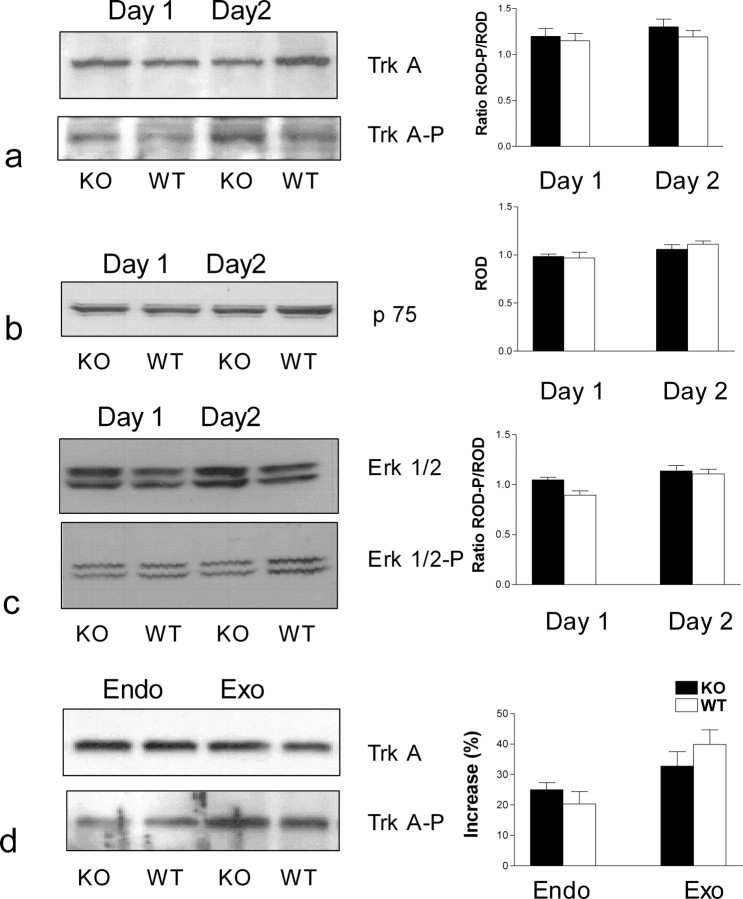Figure 4.
a–c, trkA, p75 receptor, and ERK1/2 expression are comparable in WT and apoE KO mice. Expression and phosphorylation of NGF receptors and ERK1/2 were measured in five young adult wild-type and five apoE KO mouse DCNs taken on either day 1 or day 2 after denervation of adjacent skin. Twelve to 16 nerves were excised from each animal, and each set was pooled separately. The nerves were lysed and separated using gradient gels 4–20% SDS-PAGE as described in Materials and Methods (representative gels are shown in the left panels). Immunoreactive bands were revealed by using primary antibodies. a, trkA or phospho-trkA (1:1000). b, p75 (1:1000). c, Erk 1/2 or phospho-Erk1/2 (1:5000). d, Exogenous NGF induced more trk phosphorylation than endogenous NGF. Twenty minutes after a single injection of NGF (1 μg/g) to both WT and apoE KO mice, trk phosphorylation (Exo) was significantly greater (p < 0.05) than that measured on the second day of the sprouting paradigm (Endo) for both animal groups [NGF content in denervated skin reaches levels adequate to induce nerve sprouting in adjacent skin after 2 d (Diamond et al., 1992a,b; Gloster and Diamond, 1992; Mearow et al., 1993)]. In a–d, immunoreactive bands were analyzed with MCID-Elite 6 analysis software (Imaging Research) and SYSTAT 9 statistical software (SPSS). Values are expressed as means ± SEM of the ratios of relative optical densities (RODs) for phosphorylated/nonphosphorylated proteins (trk and erk1/2) and the mean ROD for p75 expression, for day 1 and day 2 after initiation of sprouting (bar graphs on the right). Differences were considered not significant (p > 0.05).

